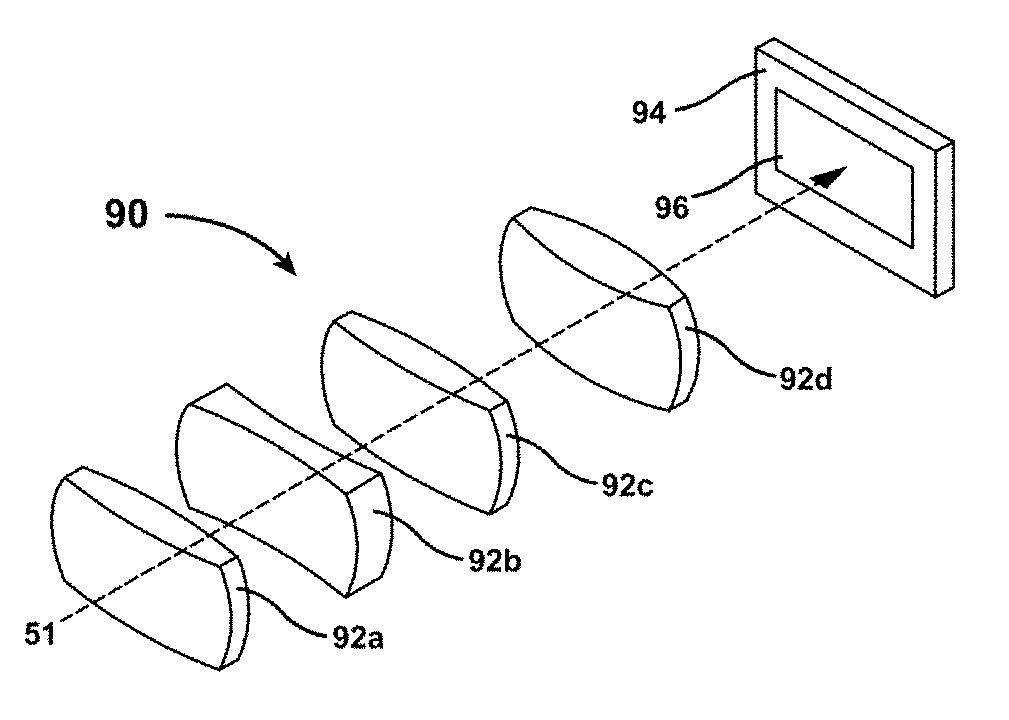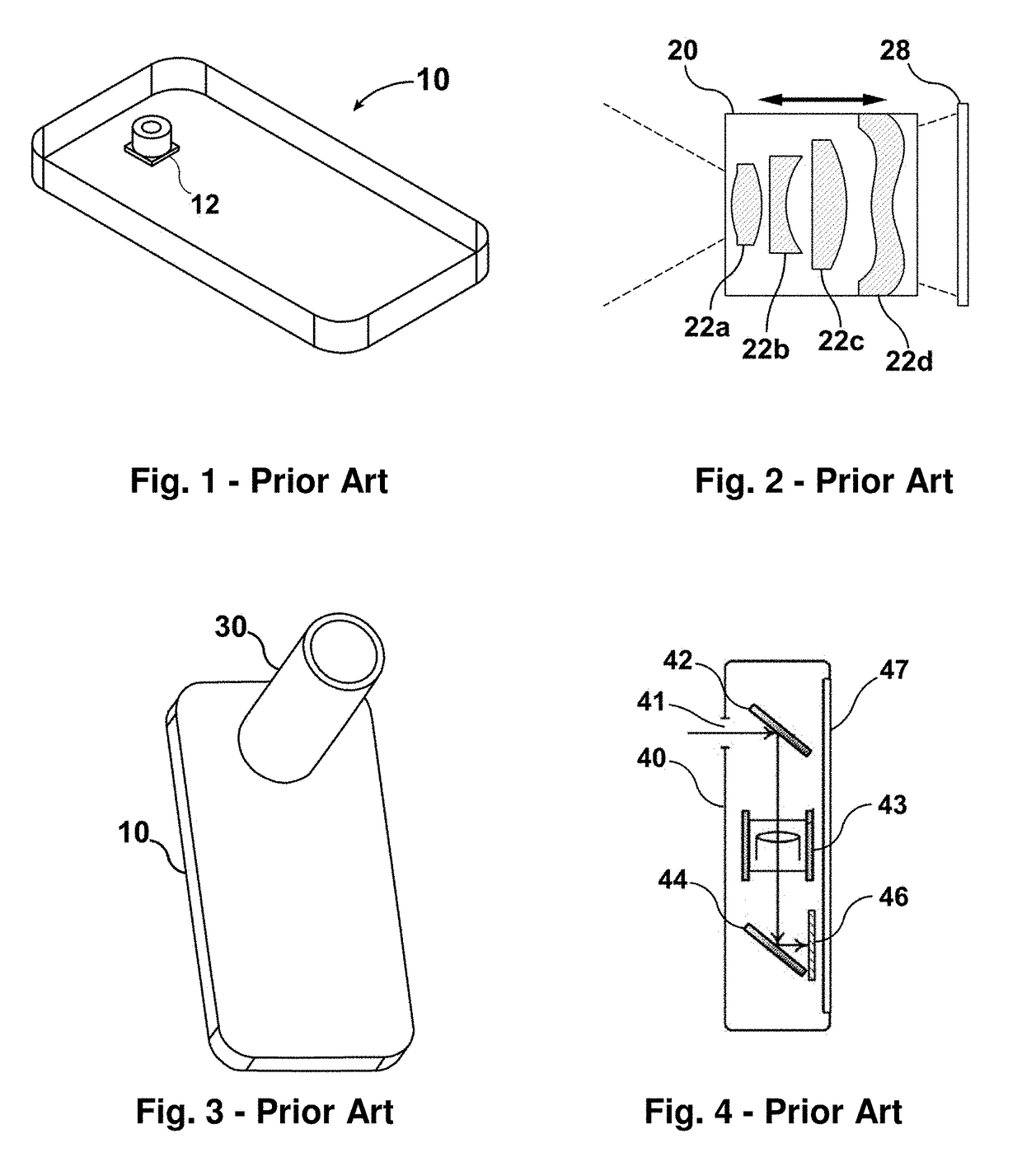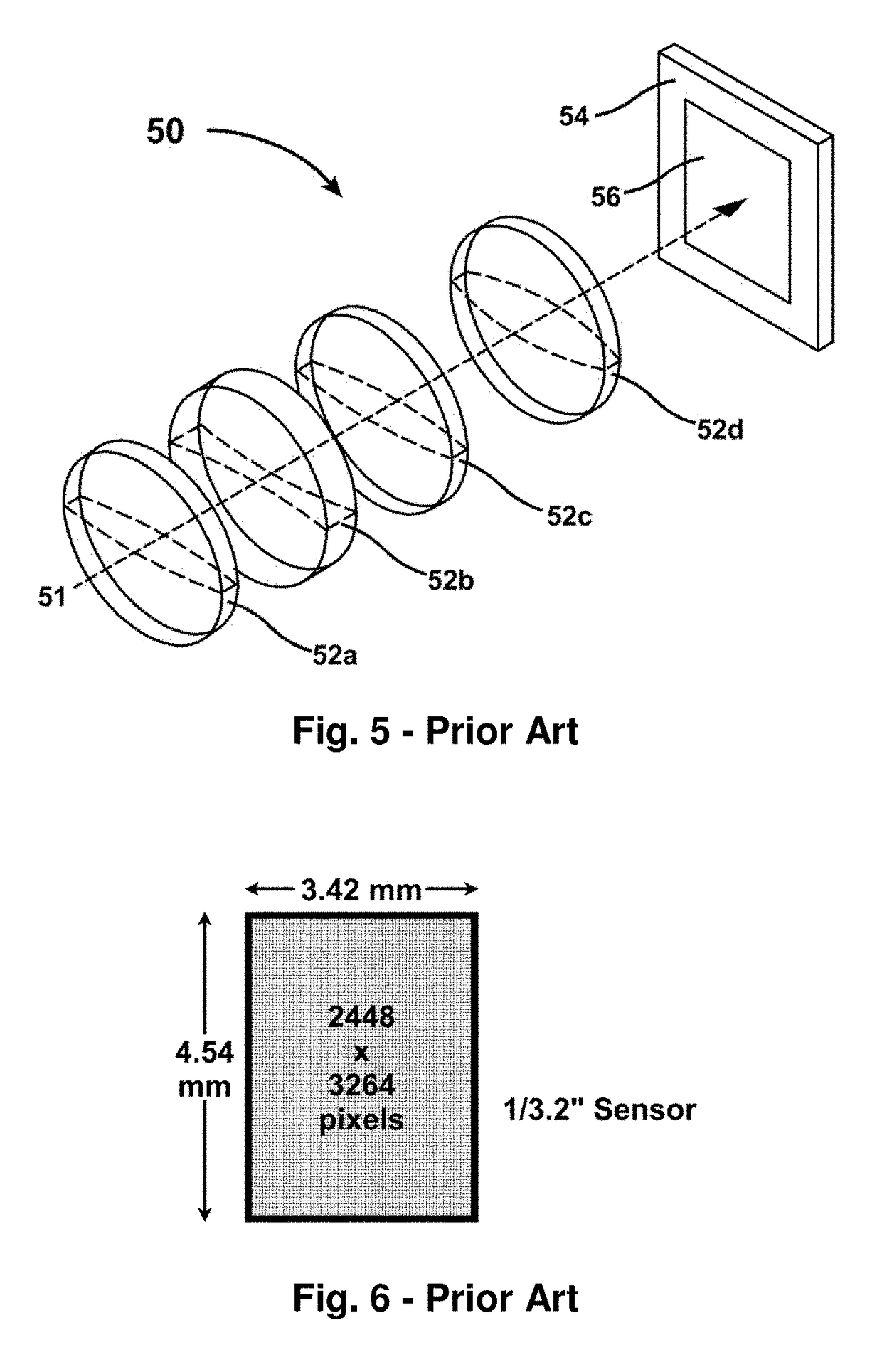Thin optical system and camera
a technology of optical systems and cameras, applied in the field of thin, lightweight optics and camera modules, can solve the problems of insufficient room available for variable magnification (zoom), extreme limitations on the capabilities of camera modules used, and insufficient practical diameter and focal length of lenses, etc., to achieve high scan rates, low power requirements, and low cost
- Summary
- Abstract
- Description
- Claims
- Application Information
AI Technical Summary
Benefits of technology
Problems solved by technology
Method used
Image
Examples
second embodiment
[0065]FIG. 15 is a section diagram of the magnets of MEMS mirror 110. In this embodiment, magnets 151a and 151b are appended to the ends of the magnet configuration of FIG. 14, which serves to further shape and constrain the magnetic field lobes. Again, other embodiments may use a single magnet with a multipole magnetization pattern that is substantially equivalent to that shown in FIG. 15 without straying from the intended scope of the present invention.
[0066]FIG. 16 depicts a section view of optical path 160 according to the present invention. Light rays 51 (shown by dotted lines throughout) enter through an entrance pupil 161 which is a lens or window that is long and narrow similar to the lens slices of optical path 100 in FIG. 9B.
[0067]Optical path 160 may also include a controllable shutter or variable neutral density filter 162, which may be placed in the position shown or elsewhere in the optical path, to vary the amount of light allowed or the depth of focus. Light rays 51 ...
first embodiment
[0073]FIG. 21 depicts the image scanning procedure used by camera module 170. With mirror segment 120 rotated to the designated scan limit in one direction, image sensor 165 captures a first image segment and transfers the first image segment to control processor 202. Control processor 202 then provides the appropriate current direction and amplitude through mirror segment 120 to rotate the mirror segment one third of the way toward the second designated scan limit, where image sensor 165 captures a second image segment and transfers the second image segment to control processor 202. This process repeats for image segments three and four, after which mirror segment 120 has reached the second designated scan limit from where mirror segment 120 started. Mirror rotation angle is precisely controlled and image segment capture is precisely timed such that each successive image segment overlaps the previous image segment to a small degree. In this first embodiment, scan mirror 120 pauses ...
embodiment 270
[0087]Embodiments of the present invention revealed thus far have all used a scanning element to collect light from directions centered roughly perpendicular to the optical path through the camera module lenses. FIG. 27 is a section view of thin camera module embodiment 270 that provides other features, including a configuration allowing a scanning element to collect light from directions centered roughly parallel to the optical path through the camera module lenses. Light rays 51 pass through lens or window 161, reflect from mirror segment 120, reflect from mirror prism 272, pass through movable lens elements 273a, 273b, and 273c, then reflect from mirror prism 172 and focus onto image sensor 165, which also is movable. In this embodiment lens elements 273a, 273b, and 273c are planar lenses, which provide extremely thin and lightweight lens elements with little or no chromatic aberration. This allows one very thin lens element to replace two or more thick lens elements usually requ...
PUM
 Login to View More
Login to View More Abstract
Description
Claims
Application Information
 Login to View More
Login to View More - R&D
- Intellectual Property
- Life Sciences
- Materials
- Tech Scout
- Unparalleled Data Quality
- Higher Quality Content
- 60% Fewer Hallucinations
Browse by: Latest US Patents, China's latest patents, Technical Efficacy Thesaurus, Application Domain, Technology Topic, Popular Technical Reports.
© 2025 PatSnap. All rights reserved.Legal|Privacy policy|Modern Slavery Act Transparency Statement|Sitemap|About US| Contact US: help@patsnap.com



